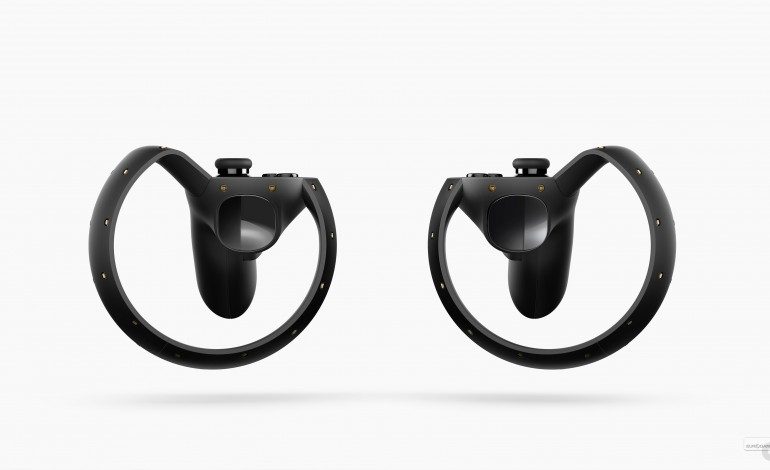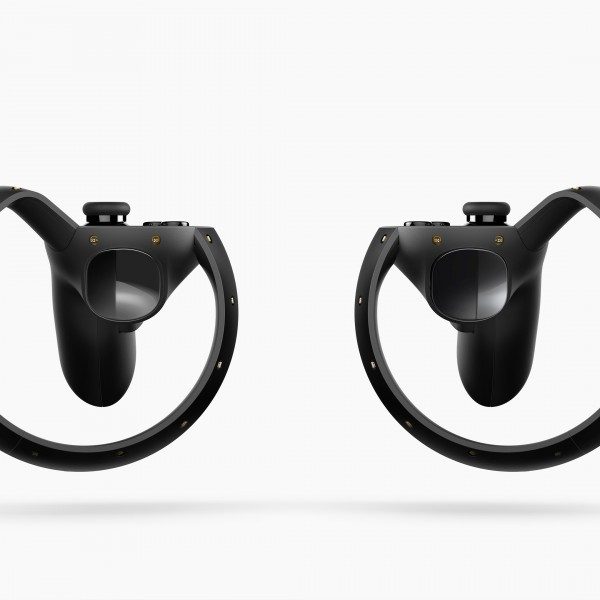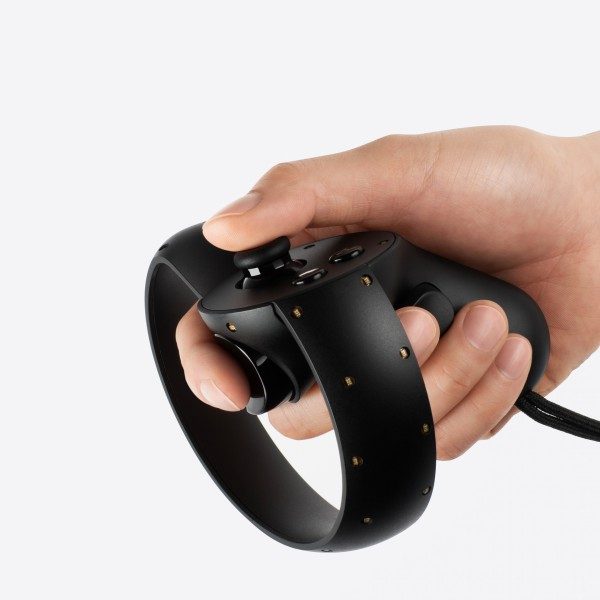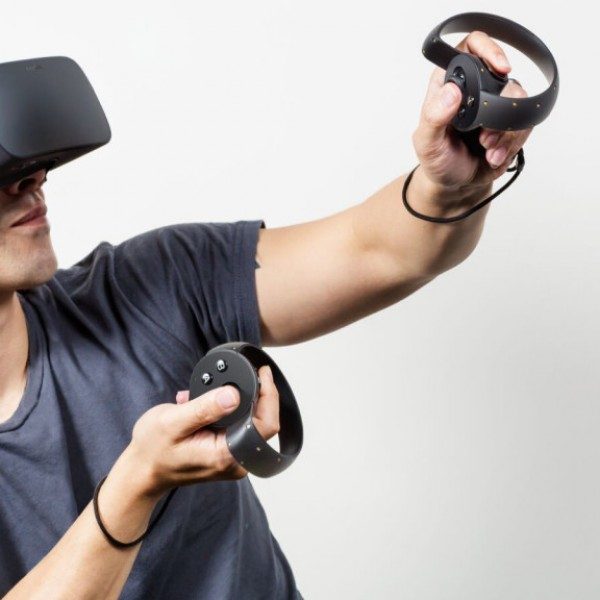

If you read my article on Oculus VR’s alliance with Microsoft, you’re aware that a consumer model of the Rift will ship with an Xbox One controller. While this is ideal for a number of games in development for the Rift, other games require a different kind of hardware to achieve the intended level of immersion.
Oculus VR isn’t run by anybody with enough ignorance to overlook this, though. In a recent blog post and in a press conference from the 11th of this month, Oculus VR and co-founder Luckey Palmer made clear their acknowledgement of the need for a different kind of controller and introduced what they call the Oculus Touch. The model demonstrated was a prototype specifically labelled the “Half Moon” that can be seen in the pictures below.
This controller comes in two parts with symmetrical designs: “like your own hands,” to quote the blog post. Each part features the semi-circle that inspired the prototype’s title lined with nodes that make up “the same IR LED constellation tracking system we use in the Rift for precise, low-latency, 6-DOF tracking,” to further quote Oculus VR’s blog. Each half of the controller also features an analog stick, two face buttons, and two triggers: one meant for your index finger and one for the rest of your hand, dubbed the “hand trigger”. Each component will have a wrist strap to avoid accidents involving impaling walls and appliances, and boast what is known as “haptic feedback”.
In case you don’t know, haptic feedback is the capability of a piece of input hardware (aka a controller) to provide tangible, feelable resistance to the player’s inputs that mimic realistic physical interaction. In laymen’s terms, the controllers vibrate and the buttons are a bit harder to push to make it feel as though you are really grabbing an object or pulling a trigger.
Last, but not least, is the controllers’ ability “to recognize a set of communicative hand poses like pointing, waving, and giving a thumbs-up.” This and the introduction of haptics are the features that will bring immersion to a new peak with the coming years.
The performance of all this new VR hardware will greatly impact the way the gaming industry approaches the future, and is worth following. Keep a close eye on how this all plays out, as it will impact every gamer in the long term.
Play games, take surveys and take advantage of special offers to help support mxdwn. Every dollar helps keep the content you love coming every single day.




